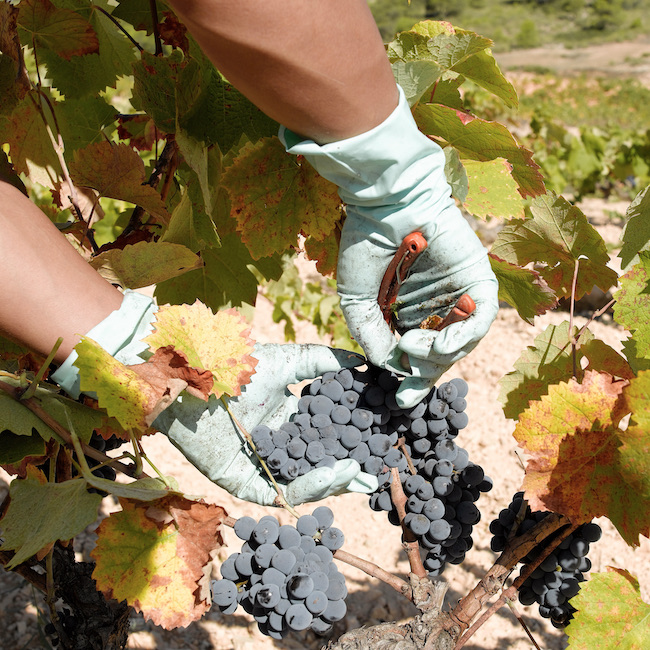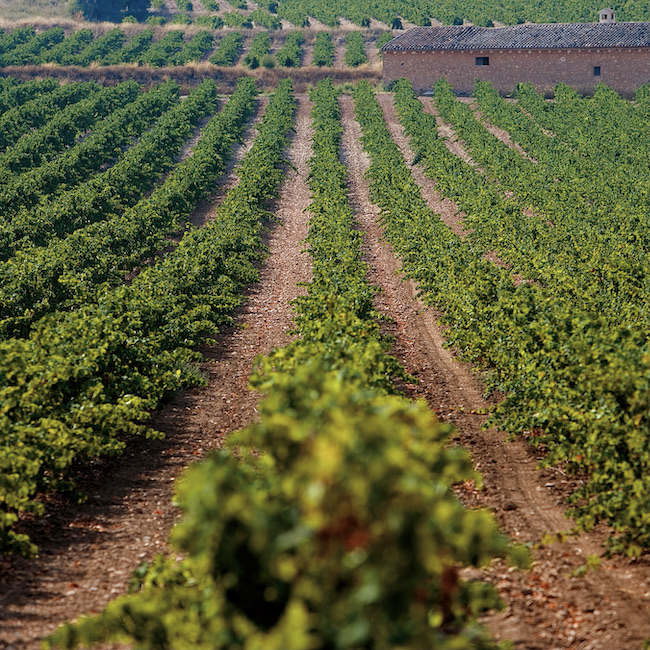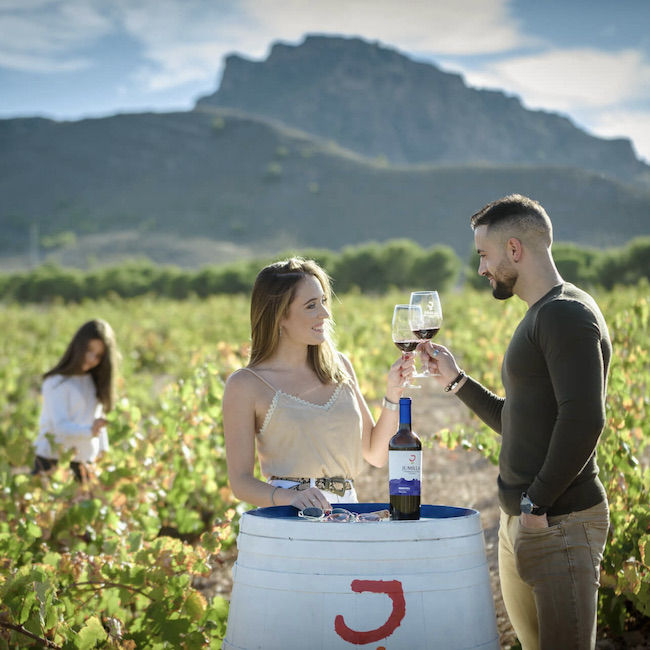by Garnacha Man - @garnachaman
.png.transform/rendition-xs/image_image%20(1).png)
This is the home to one of the most elegant yet powerful, truly Mediterranean wines as Casa Castillo Pie Franco, the first Monastrell to get the perfect score of 100 points

by Garnacha Man - @garnachaman
History of winemaking in the region
Jumilla is not a newcomer to the world of wine. Archaeological traces show that the origins of viticulture date back to more that 5000 years ago, with Vitis Vinifera seeds found here considered to be the oldest ever discovered in Europe. The biggest growth of the industry started at the beginning in 20th century. As phylloxera was destroying French vineyards, the demand for wines with high alcohol content and concentration skyrocketed, together with Monastrell plantations.
Jumilla DO was created in 1966, making it one of the oldest in Spain. But even with the DO, by 1975 only 7 wineries were bottling their wines, while other producers sold everything in bulk. Historically Monastrell had a reputation of cheap, oxidized wine with a light colour.
However, recently these unfavourable attitudes shifted radically. There are around 19,000 hectares of vineyards, 2,000 winegrowers and 45 registered wineries, all proudly printing Monastrell on their labels. It has become one of the most successful wine regions in export markets, known for rich, powerful and generous wines. But this style is not the only one. As José María Vicente, owner of Casa Castillo winery, says, “A new Mediterranean wine profile is being written”. Monastrell can be everything.
Monastrell, the star of Jumilla
The origins of Monastrell are still unknown. Like other ancient grape varieties, it has been called many different names throughout history. The origin of Monastrell comes from the Latin Monasteriellu, meaning monastery. Plantings of this variety are found all around the Mediterranean coast, with 2 important localities – Sagunto or Morvedre, as it was called before 19th century, in Valencia, and Mataró in Catalonia. These places are reflected in the names of the varieties, as in France it is called Mourvedre and in Australia - Mataro. But that’s not all. Even in Spain you can find names like Vemeta, Morastell or even Garrut, all relating to Monastrell.
This is a late-ripening, purely Mediterranean grape, it loves the sun and the heat. If planted in colder regions it struggles to ripen well, producing harsh, tannic wines. But in the right conditions it gives a completely different profile. Ripe, rounded, silky in texture, with abundance of black fruit, spices, chocolate and cacao in the aroma. It’s a wine of high intensity, generosity and softness.

Although Monastrell is not the only variety in Jumilla, it is the one with the best outlook for the future. In the 90’s there was a big move towards French grape varieties like Cabernet Sauvignon and Syrah. They reach full ripeness and show a very exuberant style. Some are blended with Monastrell while some are bottled solo. But as they struggle with the effects of climate change and require greater irrigation in a region with poor water supply, their future is unknown.
Juan Gil, the family who rediscovered Jumilla
In 2016 Juan Gil celebrated 100 years of their family winemaking history, although the story of their rediscovery of Jumilla is more recent. Miguel Gil, from the fourth generation of the Gil family, had two lifelong passions – airplanes and wine. He started in aeronautics, but he never forgot his roots. In 1998 he left his job, moved back to Jumilla and with his brother Ángel, who already experience in the wine business, started a new adventure.
Together with Jorge Ordóñez, one the leading importers of Spanish wines in the US, they found a niche for Jumilla in the States - big, bold and luscious red wines with generous alcohol and fruit expression. In 2001 the Juan Gil brand was relaunched with big investment from all 9 siblings. In 2002 a new boutique winery, El Nido, was founded. Entry-level wines, like one of the most popular Spanish brand Silver Label Monastrell, appealed to the general public, while top wines like El Nido brought acclaim from the press and international critics.
The first vintage of Juan Gil tasted by Robert Parker was 2002, he gave it a score of 91 point and wrote “I tasted it next to some top-notch Bordeaux selling for five times the price, and it was by no means outclassed”. Later on El Nido, a blend of 70% Cabernet Sauvignon and 30% Monastrell achieved a stunning 99 points. Since then the company never stopped growing. From a small yet ambitious project it has become a major producer in the region with around 1000 hectares of vineyards, mostly old vines, all managed ecologically.

Casa Castillo, new style in Jumilla
José María Vicente had never dreamt of becoming a winemaker. Since 1942 his family owned land with some vineyards, but in 1991 his father decided to stop selling grapes as the estate was losing money due to low prices. In 1994 Vicente, an architecture student at the time, decided to come home. He didn’t study oenology formally, rather learning by travelling and tasting wines: “By tasting so many wines you don’t learn a formula, you learn a philosophy, an education, and in the end, everything ends up being transmitted in what we do at Casa Castillo”.
It was in France where José María realized that Monastrell is not just a rustic and powerful Mourvedre, as it’s called there, but is considered a very noble variety with great aging potential. Casa Castillo bet on the power of this particular grape that produces expressive and personal wines, a bold move taking into account that the trend then was making coupage wines.
Monastrell is a pretty generous wine, with aromas of Mediterranean herbs such as rosemary and thyme ,touches of balsamic, red and black fruits, and of course the sharp minerality of the limestone soil. But for Casa Castillo the stereotype of high concentration, ripeness and oak are not the true soul of a Mediterranean wine, it is a choice. By working differently both in the vineyards and in the winery one can produce a different face of Jumilla - fresh, fluid and light, with notable acidity and lot’s of character.
The move toward a “less is more” style of Monastrell culminated in the 2020 vintage. Casa Castillo Pie Franco 2020 became the first wine from Jumilla to get the perfect score of 100 point from Luis Gutiérrez, the most influential critic of Spanish wines who works for RobertParker.com. José María is pretty humble about this great milestone for the whole region, though he describes his wine in a very special way - “Strangely, this wine has nothing remarkable or noticeable for the senses: not much colour, not much concentration, not much tannin, not much alcohol... but it does have a commendable balance, it is pure silk. This is a textured wine”.
And it is just a beginning. Vintage 2021 looks very promising too.
A small region in South-eastern Spain, located between Alicante, Albacete and Murcia: this is Jumilla. Despite its proximity to the sea the climate here is not Mediterranean but rather continental. The summer is very hot and dry, with only 300mm of annual rainfall and more than 3,000 hours of sunlight per year. Also, it is important to remember that Spain is the second most mountainous country in Europe, which works in Jumilla’s favour as the secret behind extremely elegant wines is altitude. Jumilla vineyards are found at altitudes of 320-1,000 metres, and the combination of hot days and cold nights allows the grapes to ripen perfectly but retain acidity, producing perfectly balanced wines in this complicated climate.
Soil is poor, deep, not very compact, and mainly composed of limestone which helps to store water - crucial in this semi-arid climate. Because of these favourable weather conditions, more than 60% of all the vineyards are certified organic – the highest rate for any winemaking region in the world. Another unique feature of Jumilla is that it is the region with the highest number of ungrafted 90+ year-old vines in the whole of mainland Europe. There are more than 1000 hectares of Pie Franco vines, as they are called in Spanish. However, not all grape varieties are suitable for these conditions. Only late-ripening grapes with tough skin, like Monastrell. can not only survive but thrive here.
